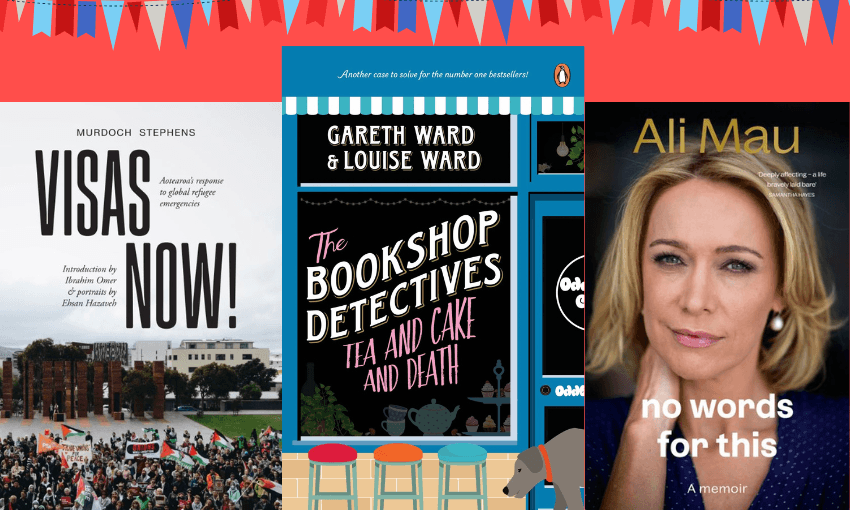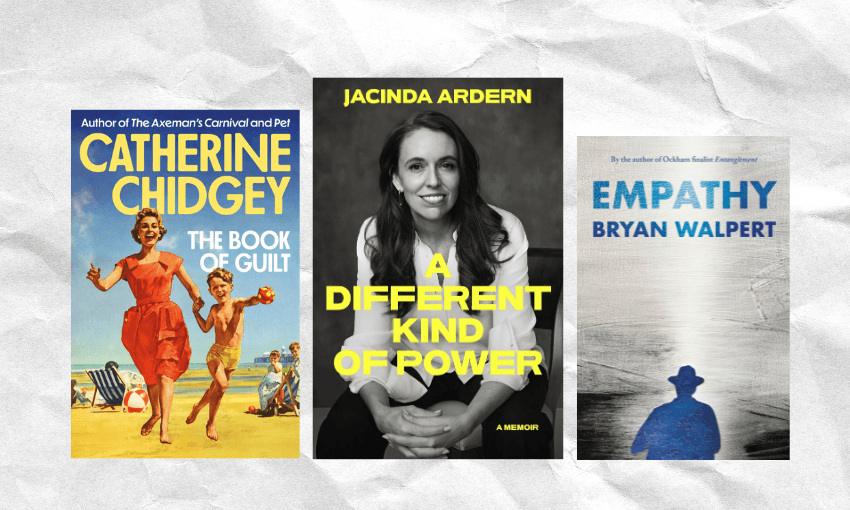The only published and available best-selling indie book chart in New Zealand is the top 10 sales list recorded every week at Unity Books’ stores in High St, Auckland, and Willis St, Wellington.
AUCKLAND
1 The Let Them Theory by Mel Robbins (Hay House, $32)
“A truly helpful treatise on seeing others as they are, and letting that be.” So says Kirkus Reviews.
2 Sunrise on the Reaping by Suzanne Collins (Scholastic, $30)
A Hunger Games prequel starring Haymitch Abernathy and set 24 years before Katniss Everdeen volunteered as tribute. A fulsome discussion about the book, and reactions to it, is over on Slate.
3 Careless People: A Story of Where I Used to Work by Sarah Wynn-Williams (Pan UK, $40)
That Meta exposé written by a New Zealander and reviewed by Julie Hill right here on The Spinoff.
4 See How They Fall by Rachel Paris (Moa Press, $38)
The whodunnit set in Sydney by ex-lawyer and now full-time writer. Read all about Paris’s journey to publishing on The Spinoff, here.
5 Central Otago Couture: The Eden Hore Collection by Jane Malthus and Claire Regnault, photographs by Derek Henderson (Te Papa Press, $70)
“To say the collection is brought to life by the photographs is an understatement; the photographs are pieces of art in their own right,” writes Jessie Bray Sharpin in her review of this majestic book.
6 Together We Roared by Steve Williams and Evin Priest (HarperCollins, $39)
Tiger Woods’s long-time caddie shares his relationship with the golfing star.
7 When The Going Was Good by Graydon Carter (Grove Press, $40)
“An editor’s adventures through the last golden age of magazines,” goes the subtitle. And here’s the publisher’s blurb:
“When the Going Was Good is Graydon Carter’s lively recounting of how he made his mark as one of society’s most talented editors and shapers of culture. Carter arrived in New York from Canada with little more than a suitcase, a failed literary magazine in his past and a keen sense of ambition. He landed a job at Time, went on to work at Life, co-founded Spy magazine and edited The New York Observer before catching the eye of Condé Nast chairman Si Newhouse, who tapped him to run Vanity Fair.”
8 Dream Count by Chimamanda Ngozi Adichie (Fourth Estate, $38)
“Adichie weaves stories of heartbreak and travail that are timely, touching, and trenchant.” Read the full Kirkus Review, here.
9 The Vegetarian by Han Kang (Portobello Books, $28)
Simply one of the greatest novels of the century by one of the best writers of our time.
10 Deep Cuts by Holly Brickley (HarperCollins, $38)
One of those novels with a cover and publicity material so crammed full of puff quotes that it’s quite hard to figure out what it’s actually about. Something about music and romance.
WELLINGTON
1 Visas Now! Aotearoa’s Response To Global Refuge by Murdoch Stephens (Left of the Equator Press, $30)
Stephens wrote a moving essay about why he needed to create this book: you can read it on The Spinoff here.
2 Once And Future World Order by Amitav Acharya (Basic Books, $40)
Political scientist Amitav Acharya argues why the world will survive the decline of the West.
3 Careless People: A Story of Where I Used to Work by Sarah Wynn-Williams (Pan UK, $40)
4 Sunrise on the Reaping by Suzanne Collins (Scholastic, $30)
5 Mad Diva by Cadence Chung (Otago University Press, $30)
A brand new poetry collection from maverick musician and writer, Cadence Chung.
6 Orbital by Samantha Harvey (Jonathan Cape, $26)
The prismatic and moving (and short) 2024 Booker Prize winner.
7 No Words for This by Alison Mau (HarperCollins, $40)
One of the biggest memoirs of the year: The Spinoff’s Alex Casey and Claire Mabey had an extremely appreciative conversation about it; and you don’t want to miss the Ali Mau edition of My Life in TV.
8 Bookshop Detectives #2: Tea and Cake and Death by Gareth & Louise Ward (Penguin, $38)
The bookshop owners and writers who are taking over the world with their delightful cosy crime series! Here’s the delicious blurb for this second instalment:
“In this rollicking new adventure, Garth and Eloise (and Stevie) must sniff out a prolific poisoner ahead of a vital fundraising event, the Battle of the Book Clubs. As time runs out and the body count rises, it seems the bad actors are circling closer to the people and places they care about.
Could Pinter, the infamous serial killer from Eloise’s past, somehow be involved? And when anyone could be a suspect, how can Garth and Eloise keep their customers, their small town and their beloved bookshop safe?”
9 The Let Them Theory by Mel Robbins (Hay House, $32)
10 The Cat Operator’s Manual by Queen Olivia III (Chronicle Books, $35)
Utterly charming guide to owning a cuddle unit (cat).



